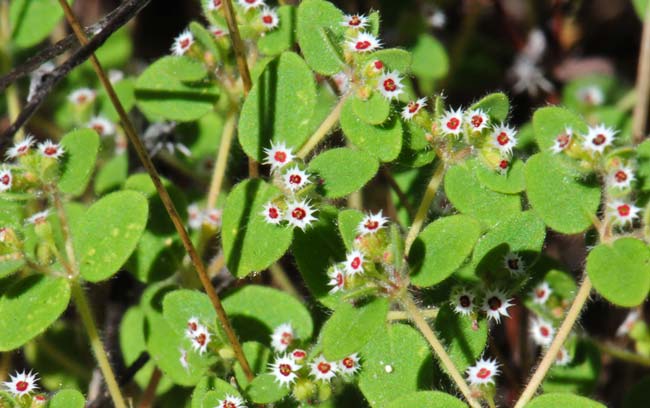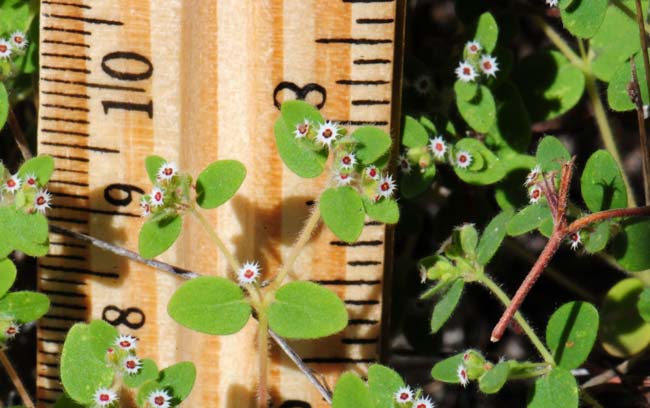Chamaesyce setiloba, Yuma Sandmat



Scientific Name: Chamaesyce setiloba
Common Name: Yuma Sandmat
Also Called: Bristle-lobed Sandmat, Fringed Spurge, Golondrina, Spurge, Yuma Sandmat, Yuma Spurge; (Spanish: Golondrina)
Family: Euphorbiaceae, Spurge or Euphorbia Family
Synonyms: (Euphorbia setiloba)
Status: Native.
Duration: Annual
Size: Low-growing herb up to 7 inches or so.
Growth Form: Forb/herb; low-growing prostrate, pubescent, multiple stems from central point, milky sap, poisonous.
Leaves: Green, pale green; opposite, stipules separate and thread-like, shape variable, oblong, ovate, also pubescent, leaf tip is acute, margins entire.
Flower Color: White, petaloid appendages parted, appendages wider than red glands, inflorescence resembles a "flower", "flower" is a cyathium, involucre urn-shaped (urceolate), pubescent, fruit a capsule.
Flowering Season: March to October.
Elevation: 200 to 5,000 feet.
Habitat Preferences: Dry sandy or sandy rocky areas.
Recorded Range: Yuma Sandmat is found in the southwestern United States in; AR, CA, NM, NV, TX and UT. Also native throughout Baja California and northwest Mexico. Not too common in NM, TX and UT. In Arizona it is found in the southwest, central and southeast parts of the state.
North America & US County Distribution Map for Chamaesyce setiloba.
U.S. Weed Information: No information available.
Invasive/Noxious Weed Information: No information available.
Wetland Indicator: No information available.
Threatened/Endangered Information: No information available.
Genus Information: Over 90 species in Chamaesyce in the United States, Canada and Mexico. World-wide over 440 species. Approximately 39 species in Arizona, statewide. Note: Taxonomists appear to be moving toward reclassification of Chamaesyce to Euphorbia, its former classification.
Comments: Yuma Sandmat is one of the easier sandmats to identify in the field with its unique fringed or bristle-lobed white appendages and pale green leaves.
In Southwest Desert Flora also see: Chiricahua Mountain Sandmat, Chamaesyce florida, Whitemargin Sandmat, Chamaesyce albomarginata; Arizona Sandmat, Chamaesyce arizonica; Head Sandmat, Chamaesyce capitellata; Royal Sandmat, Chamaesyce dioica; Hyssopleaf Sandmat, Chamaesyce hyssopifolia; Red-gland Sandmat, Chamaesyce melanadenia; Carrizo Mountain Sandmat, Chamaesyce pediculifera and Threadstem Sandmat, Chamaesyce revoluta.

